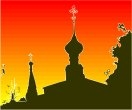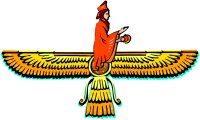
Worksheets and No Prep Teaching Resources
Reading Comprehension Worksheets
World Religion

World Religion
 Worksheets and No Prep Teaching Resources Reading Comprehension Worksheets World Religion |
 World Religion |
| edHelper's suggested reading level: | grades 9 to 12 | |
| Flesch-Kincaid grade level: | 9.18 |
|
The History of Zoroastrianism
By Colleen Messina |

|
 1 Zoroastrianism is the one of the oldest religions in the world. It began between 1,400 and 1,000 B.C. in Persia when Prince Spitama left his royal duties and searched for enlightenment. It is said that after fifteen long years, he had a dazzling vision. A divine being called Ahura Mazda gave him the name Zarathustra. Ahura Mazda also gave him a revolutionary teaching about one god that would change the ancient world. Fire became the symbol for Ahura Mazda because of its brilliance and energy.
1 Zoroastrianism is the one of the oldest religions in the world. It began between 1,400 and 1,000 B.C. in Persia when Prince Spitama left his royal duties and searched for enlightenment. It is said that after fifteen long years, he had a dazzling vision. A divine being called Ahura Mazda gave him the name Zarathustra. Ahura Mazda also gave him a revolutionary teaching about one god that would change the ancient world. Fire became the symbol for Ahura Mazda because of its brilliance and energy. |
Create Weekly Reading Books
Prepare for an entire week at once! |
| Leave your feedback on The History of Zoroastrianism (use this link if you found an error in the story) |
 |
World Religion
|
 |
High School Reading Comprehensions and High School Reading Lessons
|
 |
Social Studies
|